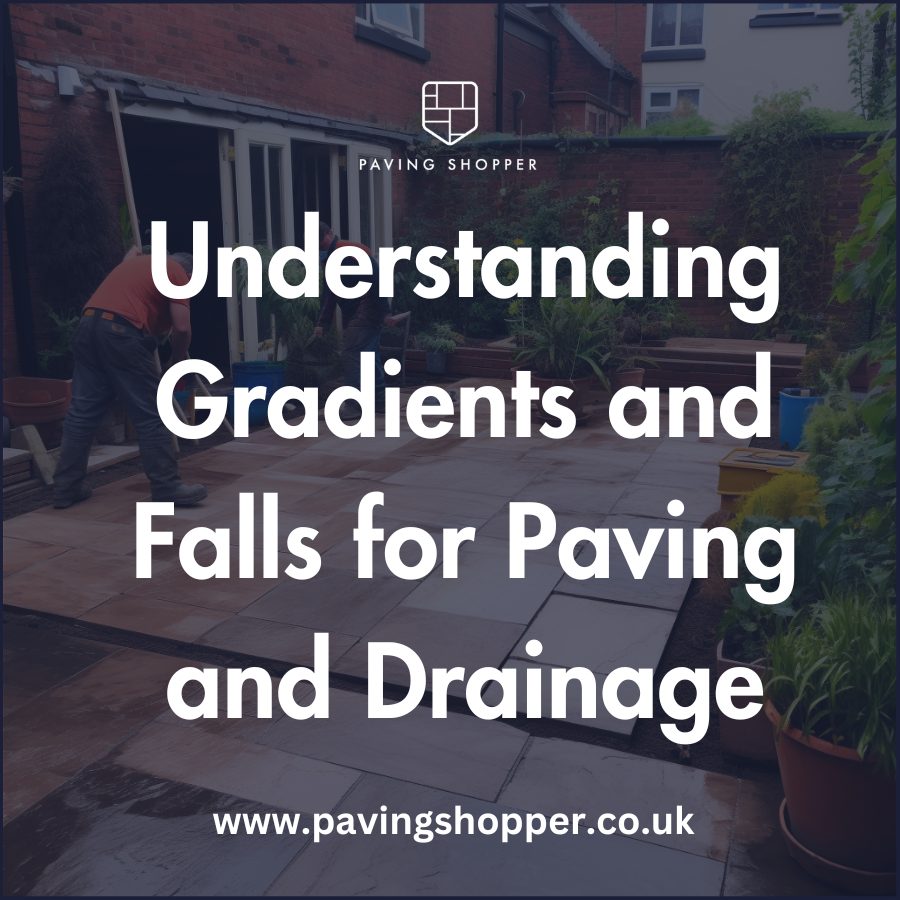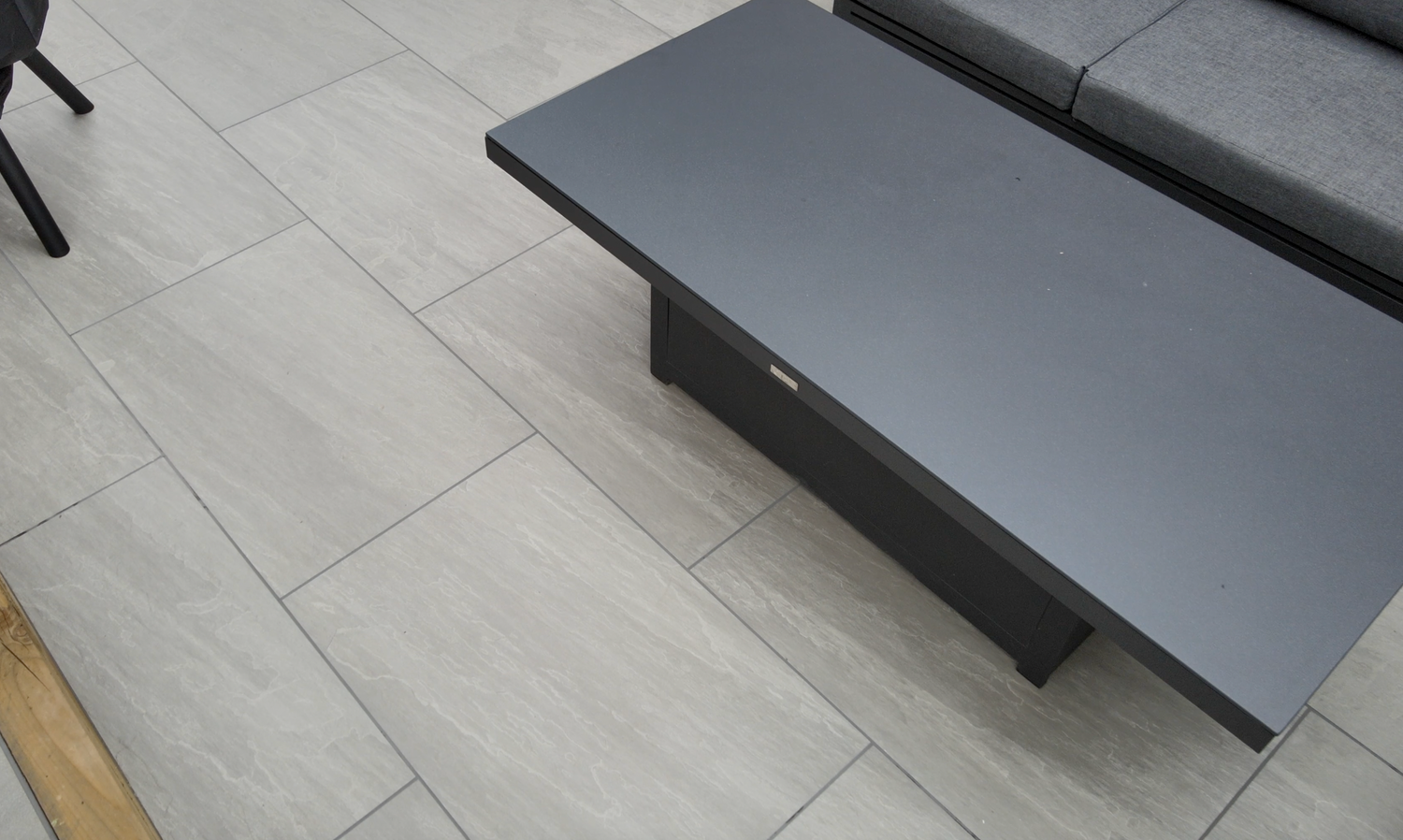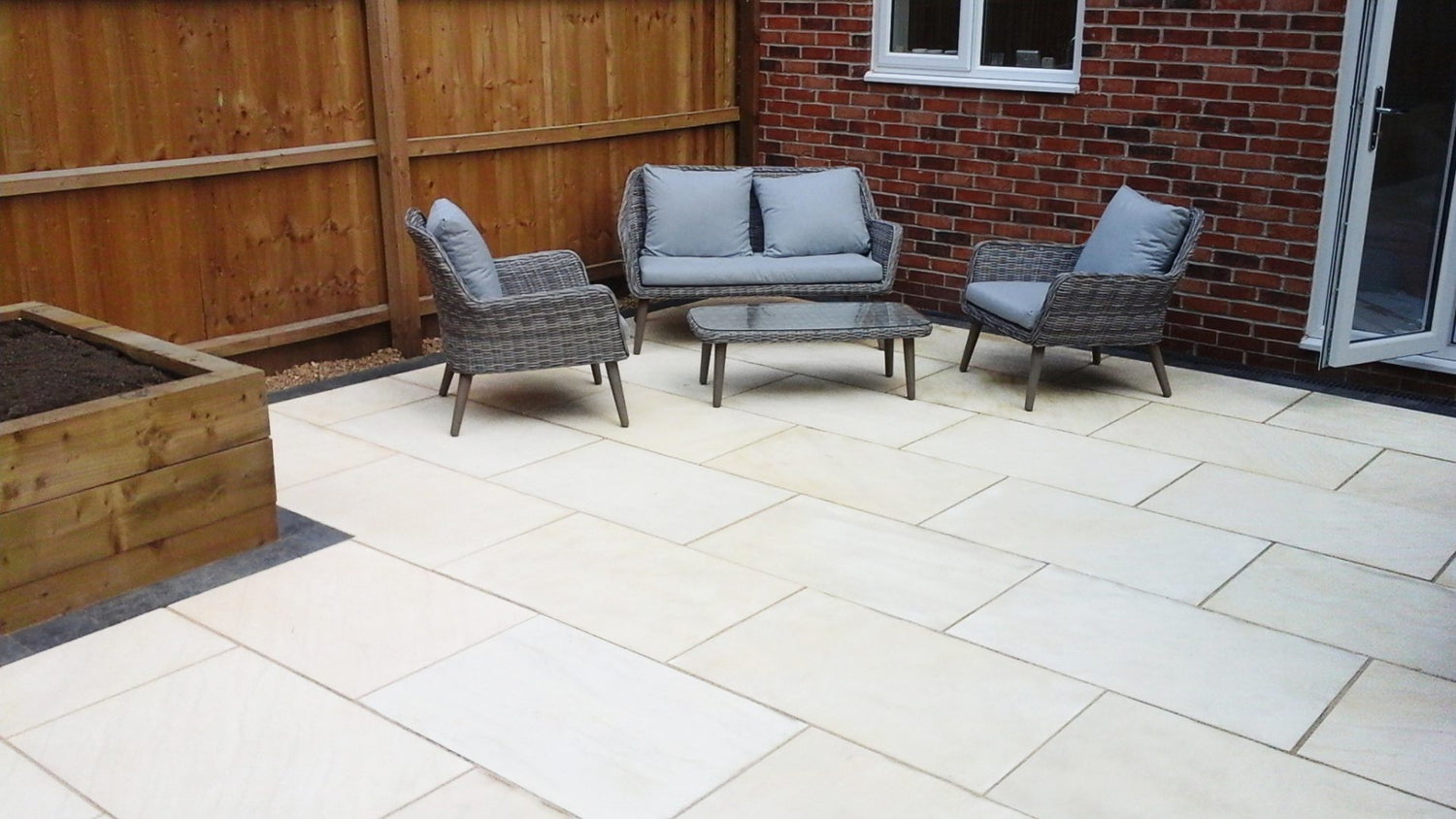
Understanding Gradients and Falls for Paving and Drainage (2024)
Share
When it comes to paving and drainage projects, understanding the correct gradients and falls is essential for ensuring proper water runoff and long-term durability. Whether you're planning to install a new patio, walkway, or drainage system, getting the slope right is crucial to prevent pooling, erosion, and potential structural damage. This comprehensive guide will cover everything from basic concepts of gradient calculation to advanced techniques, ensuring you achieve professional results while avoiding common pitfalls. By the end of this guide, you'll be equipped with the knowledge to choose the right paving materials and apply the correct slopes for your project.
What are the Different Types of Falls?
In paving and drainage projects, falls are the slopes that direct water away from surfaces. There are two primary types:
- Endfall (Longitudinal Slope): This fall runs along the length of a surface or pipe, guiding water in a specific direction.
- Crossfall (Transverse Slope): This fall runs across the width of a surface, ensuring water is efficiently drained across the entire area.
Understanding these types of falls is crucial for planning your project effectively, ensuring that water flows away as intended and does not accumulate where it shouldn't.
How is the Gradient for Patios Calculated?
The gradient, or fall, measures the steepness of a slope and is essential for proper drainage. It is calculated as the ratio of the vertical rise to the horizontal run:
Gradient = Rise/Run
For instance, a gradient of 1:100 means that for every 100 units of horizontal distance, the surface should drop by 1 unit. This calculation ensures that your patio will allow water to flow off smoothly, preventing pooling and water damage.
Tools and Techniques for Measuring Gradient
Accurate measurement of gradients is critical for ensuring your paving project is successful. Consider using the following tools:
- Laser Levels: Perfect for large areas, laser levels provide precise measurements over long distances.
- Spirit Levels: Ideal for smaller projects, spirit levels help you ensure each section of your paving is correctly sloped.
- String Line and Stakes: A simple, low-tech solution for visualizing the slope over a distance.
These tools will help you achieve the exact slope needed for proper drainage, whether you're working on a small patio or a large driveway.
Common Mistakes in Gradient Calculation
Even with careful planning, some common mistakes can lead to drainage issues. Here are some errors to avoid:
- Ignoring the Whole Area's Drainage Needs: Always consider the entire area and how water will flow across all surfaces, not just a single path or patio.
- Incorrect Slope Ratios: Using too steep or too shallow a gradient can lead to poor drainage, erosion, or water pooling.
- Inadequate Compaction: Ensure the sub-base is properly compacted to prevent settling that could alter your planned gradient.
Avoiding these mistakes will help ensure that your paving project remains durable and effective in directing water away from your property.
How Much Fall Should Garden Paving Have?
For garden paving, a minimum slope of 1:40 is recommended. However, in areas with heavy rainfall, a slope of 1:60 to 1:100 is better to prevent water from pooling. Crossfall should typically be half of the endfall to ensure even drainage across the surface.
Choosing the right gradient will protect your garden paving from water damage and maintain its aesthetic appeal over time.
Choosing the Right Paving Material Based on Gradient
The material you choose for your paving project can significantly impact its performance:
- Sandstone paving slabs: Ideal for areas with gentle slopes due to its natural texture, which offers excellent traction even when wet.
- Porcelain paving slabs: Known for its stain resistance and minimal water absorption, porcelain provides a sleek finish but requires precise gradient to avoid water pooling.
- Mixed Size Patio kits : An excellent choice for those seeking convenience and design variety, allowing for easy installation with built-in gradients.
Selecting the appropriate material based on your site’s gradient will enhance both the functionality and appearance of your outdoor space.
Additional Examples of Calculating Fall
Patio Gradient
Consider a 12-meter-wide patio with a 1:80 gradient:
- Rise = 1 unit
- Run = 80 units
- Fall per meter = 1/80 = 12.5mm
- Total fall across patio = 12 * 12.5mm = 150mm
This calculation ensures that water will drain efficiently across the patio, preventing issues with water accumulation.
Drainage Pipe
Consider a 30-meter-long drainage pipe with a 1:100 gradient:
- Rise = 1 unit
- Run = 100 units
- Fall per meter = 1/100 = 10mm
- Total fall over length = 30 * 10mm = 300mm
Accurately calculating the fall for drainage pipes ensures that water flows smoothly, avoiding blockages or backflow.
Related Resources
To deepen your understanding and ensure success in your paving projects, check out these related articles:
Patio Pointing Mix slabs
Porcelain vs Ceramic slabs
Understanding and correctly applying gradients and falls in your paving and drainage projects is essential for long-lasting, effective results. By choosing the right materials and tools, and avoiding common mistakes, you can create beautiful, functional outdoor spaces that stand the test of time. For all your paving needs, explore our wide range of high-quality products designed to meet the specific requirements of any project.
Related Posts
-

UK Garden Statistics and Trends 2024
UK Garden Statistics and Trends 2024 General UK Garden Statistics The vast majority of UK households have access to ...
-

Can I lay Paving on Soil or Mud?
Technically, yes – you can lay paving stones or slabs directly onto exposed topsoil however, laying a sub-base will e...
-

How Much Does a New Patio Cost?
A new patio in the UK typically costs between £80-£150 per square meter. For a 40-50 sqm patio, expect to pay £2,000-...
-

What Different Sizes Do Paving Slabs Come In?
When planning a patio or outdoor paving project, one of the key decisions is choosing the right size paving slabs. ...
-

Can You Pressure Wash Indian Sandstone?
Indian sandstone is a popular choice for outdoor paving due to its durability and attractive appearance. However, li...
-

Is Sandstone Paving Permeable? Is it porous?
Sandstone's porous nature enables it to absorb rainfall, qualifying it as a permeable paving variety. However, seali...
-

Where Does Natural Sandstone Paving Come From?
Sandstone begins deep underground, formed over eras as minerals and sediments fused under pressure. Powerful forces ...
-

5 Paving Ideas for Small Gardens: Maximise Your Outdoor Space
Front of House When considering paving ideas for the front of your house, it's crucial to select ones that complem...
-

9 Paving Ideas for Front of House: Enhancing Curb Appeal with Style
The facade of a house plays a pivotal role in defining its character and curb appeal, and the choice of paving can s...
-

9 Summer Garden Paving Ideas UK
Summer gardens offer a vibrant canvas for homeowners to express their style while enhancing outdoor living spaces. G...
-

8 Garden Paving Ideas for 2024
It's time to refresh your garden's look for 2024 and an easy way to do that is with some new paving. With so many opt...
-

How to remove moss from patio paving
Moss growth is a common issue for patio paving, especially in damp, shaded areas. While moss may seem harmless, it ca...
-

How much does sandstone paving cost?
When choosing new garden pavers, sandstone offers homeowners an enticing middle-ground - more durable than basic conc...
-

Why Do Paving Slabs Crack And How To Repair Them
Seeing cracks appear on your patio or driveway can be disheartening after investing time and money into installing be...
-

How to lay paving in winter (Tips & Tricks)
How Cold Temperatures Impact Paving Projects The primary concern when working in cold weather is ensuring proper curi...
-

Sub Bases For Patios
Building the Perfect Patio Base: A Comprehensive Guide When planning an outdoor living space, understanding proper ba...
-

Pros and Cons of Porcelain Paving
Are you considering adding porcelain paving to your outdoor space? It's important to weigh the pros and cons before ...
-

Understanding Paving Slip Ratings: A Comprehensive Guide
A paving slip rating, also known as a slip resistance or anti-slip rating, is a measure of how slippery a surface...
-

Stunning Garden Water Feature Ideas - Enhance Your Outdoor Space
Garden water features are decorative elements that incorporate water into a garden, adding beauty and a sense of ...
-

How to Stop Weeds in Block Paving: Expert Tips andTricks
Weeds growing between the blocks of your paving can be an unsightly and frustrating problem. Not only do they make y...
-

How to clean paving without a pressure washer
A patio cleaner is a cleaning solution designed specifically for removing dirt, grime, and stains from outdoor patio...
-

How to Grout Paving Slabs – Expert Tips and Techniques
Pointing paving slabs is an important step in the process of installing them. Grout is a mixture of cement, water...
-

Block Paving Guide | What Does it Cost? | How Much Per m2?
Block paving is a versatile and durable option for creating driveways, patios, and paths. This method involves using...
-

Porcelain VS Ceramic Paving
Porcelain paving is non-porous and more durable than ceramic paving, which is more porous and prone to stains and wea...
-

Sandstone V Porcelain Paving - (Style Comparison and Distinctions)
When choosing materials for your patio or driveway, two of the most popular options are sandstone paving slabs and p...
-

Indian Sandstone Paving Colours for A Patio - A Comprehensive Guide
Indian sandstone is one of the most popular paving materials, celebrated for its natural beauty and the variety of co...
-

Jointing and Pointing For Paving (Sand & Cement Mix)
Patio pointing is important for both looks and durability. It protects the layers under your paving, stops weeds, and...
-

How to Lay Paving on Sand and Cement: Expert Advice and Tips
Paving on Sand and Cement: A Comprehensive Guide When it comes to enhancing your outdoor space, paving is a popular ...
-

Pros and Cons of Sandstone Paving
Pros & Cons of Indian Sandstone Paving Indian sandstone paving is a natural and durable option that adds both bea...
-
Does Patio Paving Need Edging? A Comprehensive Guide
In this article, we'll explore the importance of patio edging, the different types of edging materials available, and...
-

Pet Friendly Paving - What is the best paving for a dog-friendly garden?
Creating a dog-friendly garden requires choosing the right paving materials to ensure your furry friends can enjoy t...
-

Patio Paving Laying Patterns Guide
Paving patterns can transform an ordinary outdoor space into a stunning and eye-catching area that complements your ...
-

Patio Kits vs Single Size Paving Slabs: Which To Choose?
When designing a patio or outdoor space, one crucial decision is whether to use a patio kit (also known as patio pack...
-

Are paving slabs suitable for driveways?
This is a question many homeowners ask when it comes to choosing the right type of driveway surface for their home. T...
-

How much paving do you need to cover your outdoor space?
Planning an outdoor paving project is exciting, but it’s crucial to accurately estimate the amount of paving needed b...
-

What is the Best Paving for Patios?
When it comes to choosing the best paving for patios, there are a variety of factors to consider, such as durability,...
-

Sandstone v Limestone v Porcelain: The Pros and Cons of Different Garden Paving Materials
Transforming your outdoor space involves choosing the right paving material, and porcelain and sandstone are two of t...
-

Are Paving Slabs Cheaper Than Decking?
Transforming your backyard into the ultimate outdoor oasis can be challenging when choosing between paving slabs or d...
-

How to lay a patio - An expert guide to laying paving slabs and patterns
There are a few things to consider before laying a patio, such as the type of paving stones and the laying pattern. Y...
-

How to cut Sandstone Paving?
When it comes to prepping your garden for a new patio, you may consider different designs that require your paving to...












































